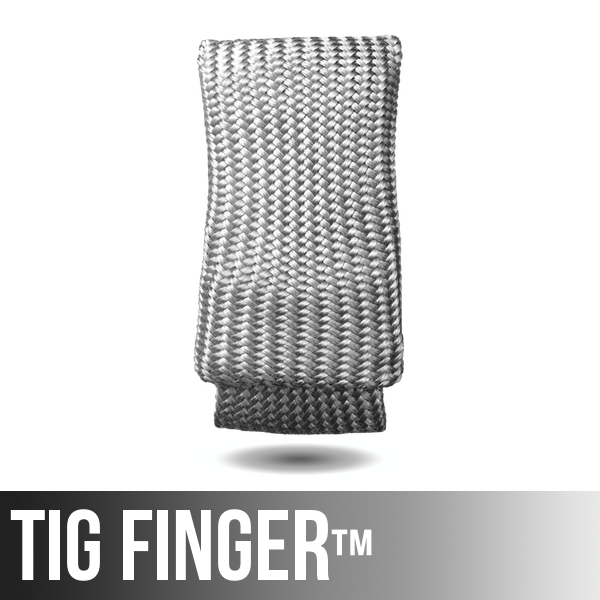here are a few links to stuff used in this video
metabo 6”angle grinder http://amzn.to/2tQU2s3
metabo slicer plus cutting wheel http://amzn.to/2sLgsLX
Walter zip Cutter cordless grinder http://amzn.to/2tVVqKA
Walter zip cutter wheels http://amzn.to/2uvafky
flapper adapter http://www.flapperadapter.com/
Video Transcript:
Grinders, Grinding Wheels, and a Flapper Adapter
Okay. I see it now. I’ve got a grinder problem. Only reason I ever first bought the first of my electric grinders was setting up shop in my home, and I bought a Syncrowave 250 in the mid-’90s. At the time, I was moonlighting at a sheet metal fab shop for not much money and punching a clock, and so I got a chance to get some work, if I had a welding machine. I did the math like, well, I can make four or five times as much as I’m making at this sheet metal fab shop in my own garage if I have my own welder.
So I stepped out and bought a Syncrowave 250, which … you’ve got to have a grinder. And the work that I was doing at that time actually needed to run little 3m Scotch-Brite pads for blending aluminum. It was on aluminum prop spinners, and I’d do maybe 5 or 10 of those a week. I made way more money than I did at that sheet metal fab shop in my own garage, taking my own time.
There was some tedious blending, dye checking, things like that going on. But my very first grinder was a 4 inch Makita. Now, I’ve got this … this is an attachment and here, right now. That’s called a flapper adapter. I learned about that just a few years ago. They didn’t have it back when I bought this Makita, or at least I didn’t know about it. So I bought the Makita just to have a grinder, a little angle grinder that I could run sanding pads, hard rocks, wire wheels, things like that on.
When I stated doing those prop spinners, I bought this one. This is a Black and Decker industrial straight grinder, and I was using this with both hands to do blending. And that was less than ideal, but I didn’t have an air compressor, and this is a whole lot cheaper than an air compressor. And it worked. If I’d have known about this flapper adapter, where I could run these little pads, I wouldn’t have even needed to get this one. This one would’ve gotten me by just fine.
So now, I strictly keep the flapper adapter on here for doing blending, because this four inch grinder is a lot easier to hold. You can grab it up here on the head. You can grab it up here like this, and it’s got a slide switch. You can run it with your thumb, and you can do some fairly precise work for it. Not nearly as precise as you can with a nice little 90 air grinder. This is really nice for doing stuff like that, but again, if you don’t have a compressor, this will do.
Flapper adapter. Flapperadapter.com … I don’t have anything to do with those people. I just think it’s a pretty cool little adapter. Actually, it cost as much as a straight grinder from Harbor Freight, but it’s not the same. It takes the RPMs down. It’s easier to maneuver. And incidentally, I bought this straight grinder from Harbor Freight while this one was in the shop getting rebuilt. I needed a straight grinder, so I went ahead and picked one up.
Now, this thing is a beast, but it is dangerous. When I say that, it’s got a slide switch on there, and I left it on the table one time and didn’t know the slide switch was stuck on. It had a big 4 inch slitting wheel on it, and I bent over like this to plug it in. Ran down my back. I unplugged it really fast, but it still got me, ran down my back, nipped me. Could’ve been way worse. It wasn’t bad, but it made me realize, be very careful. Never plug it in without checking to see if it’s on, because it can be stuck on.
But it got me by, and it’s strong, and it’s got high RPMs. I think it’s 20 thousand RPMs, 25 thousand. I don’t really love it, because it doesn’t have a paddle switch on it. This one’s got a paddle switch. Highly prefer this one. Again, this one got me by while this one was being rebuilt.
I’ve got four Ryobi angle grinders, and the reason I have so many of those … two reasons. Sometimes, I’d go into Home Depot needing a hard rock. Maybe that’s all I needed was a hard rock, and the grinder would be on sale marked down to maybe 25 bucks. It came with a hard rock and a wire wheel, an extra wrench. You already know I’m always misplacing my wrenches, so I just pick up the whole grinder.
Also, there was a lot of times when I would be keeping up shop in my own shop, and then on another location, and I didn’t want to tote tools back and forth. So I’d buy a grinder or two extra to have in those locations, and now I have four of them. Not sorry, because I keep different stuff on each one. I keep a flat disc on one, maybe a rough thing to remove a little light mill scale or a little paint without removing much material, things like that.
Then, I’ve got these two air grinders. These are from Northern Tool, and they’re okay, but they’re really loud. Way louder than a Dotco or Ingersoll Rand or something better like that. Whenever I do get a big air compressor, I’m going to get better grinders that will hold up longer, vibrate less, and quieter.
So I’ve got two cordless grinders, 4 and a half inch grinders. This is a Walter zip cutter, and this is a Ryobi. Apples and oranges, okay? Big difference in price, big difference in power, big difference in how long the battery lasts. This one’s a beast. This one’s okay for just touch up work. In fact, I’ve used a little bit to sharpen electrodes with, just keep it on the bench. It stands up there just like that, so … This one, I can depend on the battery lasting a good, long while, and it’s got an extra battery. So this is stout. Very stout. This, not so much.
This is a 6 inch Metabo angle grinder, and it wasn’t until I met my friend JD Brewer that I realized or came to realize just how productive this tool could be. With a cutting wheel on here, it’s crazy what you can cut and how fast you can cut it. It rivals a plasma cutter or a cutting torch when you consider all things sometimes. Like, if you’re cutting something an inch thick, cutting torch is definitely the way to go. But carrying this on site’s a whole lot easier than carrying a cutting torch or plasma cutter.
And it’s just a beast. I mean, it just … you really can’t slow it down. It’s got this little knurled knob here that pretty much … it won’t lock up, so you don’t need a wrench. It’s got a little special spring clip dealio in there that keeps it from looking up, so it keeps you from having to carry a wrench around with you to change wheels. We did a little test here at JD’s shop a year or so ago, comparing just how quickly a Metabo 6 inch would cut some square tubing with a 3/8ths wall. Definitely held its own with a cutting torch when you calculated prep time afterwards with a flap disc or a hard rock or whatever to get something ready to weld. JD also loves the dual shield flux core in his shop.
All right. I was at my welding supply the other day. I picked up this little waffle pattern Walter wheel for removing hot rolled mill scale. I’m always looking for stuff to remove mill scale better. It seemed to do a pretty good job without clogging or loading up, and you can see I’m bearing down on that grinder quite a bit. But the flat disc that Walter makes … I think they’re called the Enduro-Flex. Those are super good, as well, and they’re pretty good for removing hot rolled. You can bear down on them. You can actually trim them back, too, and get a lot of life out of them. And they are more expensive than a lot of other flat disc, but definitely worth it.
And why would you want to clean mill scale? Well, especially if you’re TIG welding, you’ve got to clean that mill scale just to make it more fun. Does this look like fun? It doesn’t. This just takes all the fun out of TIG welding here. It’s just like welding in a bowl of cornflakes. It’s not going to look as good when it’s finished. It might be a halfway sound weld, but it’s just ugly.
And contrast that with cleaning the mill scale. I didn’t even clean it very well here, but so much more fun to weld on something like this that’s clean, free of mill scale. And it looks better when you’re done, and it’s just more enjoyable. Big difference in cleaning mill scale versus not.
These are my four Ryobis. You can see that I’ve got pretty much different wheels on all of them. Small cutting disc there. This black wheel here … pretty much, I’ve only used it for removing paint and coatings like that. You can remove some light mill scale, like off of DOM tubing or something like that. Maybe not the best for removing heavy, thick mill scale off plate. We used this wheel a while back in JD’s shop for removing black paint off this little jet pump housing cast aluminum job we did, and it removes the paint without removing a whole lot of material thickness. So it worked great.
And you can see the flapper adapter at work here, using a small, small grinding wheel. Lots of choices. It gives you lots of choices of bits you can use. You can use a carbide bit here for routing out a crack in aluminum or cast iron, and that just kind of gives you more choices to get more out of your grinder with this thing.
All right. Here’s my two end grinders again, my straight grinders, the Harbor Freight that I’ve got in my hand there. And like I said, I’m just really careful with it when I use it now. It got me once. I prefer this paddle switch. I think, by and large, I prefer a paddle switch on everything, but sometimes, you just get what you get.
Now, what do you do with these kind of grinders? Typically, using them a lot for cleaning the ID, inside diameter of pipe like this. That’s a real common use for it. It just gives you a lot of choice. You can put a grinding rock in there or a flapper wheel like this. This is real common in the pipe-fitting industry, to clean the inside of a pipe for … prior to TIG or MIG welding. And with the flapper adapter, I can run the same thing on the angle grinder.
Like I said, I pretty much keep it on this 4 inch Makita, because I keep these type of wheels on here. I’m always doing a lot of cut and etch tests, and it helps me polish the cross-section and get a good etch. They’re really good for blending aluminum, too. Like I said, on those prop spinners that I used to do, I would have to do little welds like this, typically. And I’m a little aggressive here. I’m getting into some base metal, but look at how much porosity it reveals there on that weld that looked okay to start with. And that’s pretty typical in aluminum. You really got to clean it before you weld it.
Something I really like to do on these cordless grinders is run a wire cup brush, especially for stick welding, or just maybe removing a little light rust here. This light rust gets on my table here from my cutting and etching that I do with the acid etch, and I forget to clean it up afterwards with baking soda or whatever. But especially handy for removing slag on stick welding, and the reason it’s handier than with corded grinders is because the RPMs are slower and don’t sling those wheels that love to stick in your shirt and in your nose and everywhere else.
All right. Thanks for watching. It’s not that easy to make a topic like grinders exciting, but I gave it a shot. It seemed like every job that I went on over my career, they’d have these certain different grinder abrasives, attachments. Little tiny wire brushes or little abrasive cartridges they call Tootsie-Rolls, things like that. And you just don’t know about them until you’re exposed to them.
So if you’ve got some tips like that, some certain things that you found super helpful and you wouldn’t mind sharing them in the comments, I think we could all learn from it. By the way, I’ll put some links in the description underneath this video on YouTube, and you can see … you can learn more about some of these products that I used here, some of the grinders, some of the cordless grinders and some of the flap discs and things like that. See you next time.






July 8, 2017 at 4:25 PM
Hey Jody,
Been getting your emails for about a year now. Absolutely love them!
I bought a tig finger it kicks ass. Would love if you would do a show on tungsten tip prep for all different metals. I’m a firefighter by trade and im starting to do metal work on the side. Always looking for pointers.
Thanks